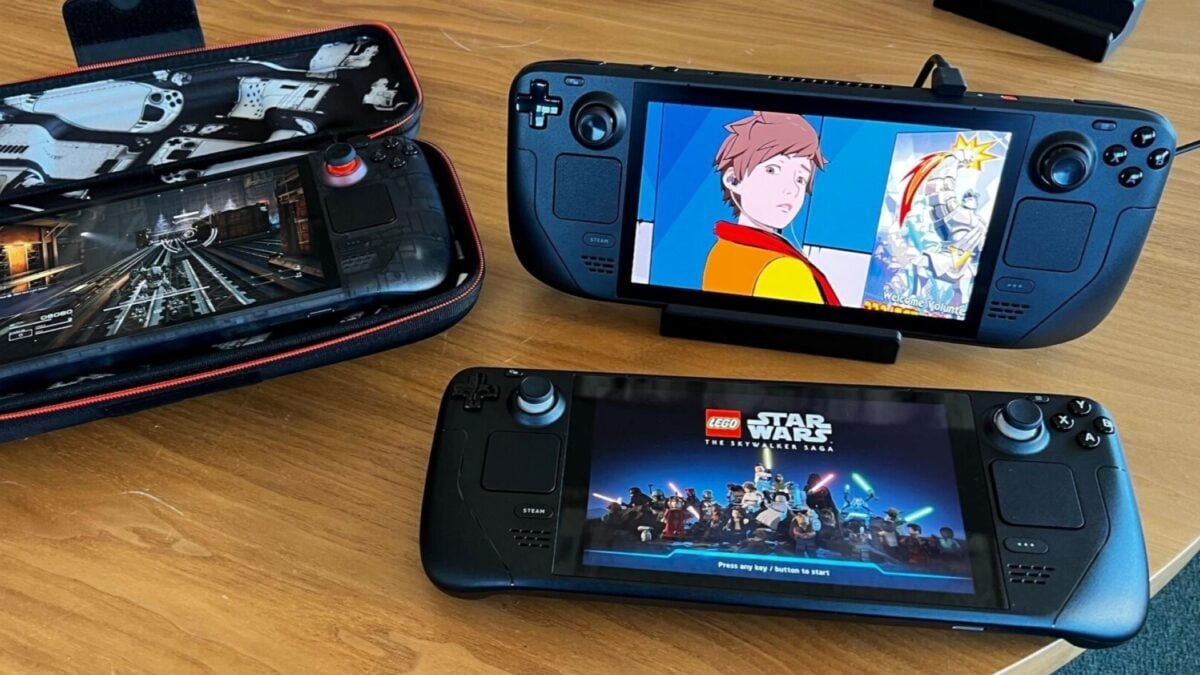Like an angry parent, Valve has repeatedly reiterated that it won’t make Steam Deck 2 until you stop asking about it. While there are several new handheld PCs that are many times more powerful than the old Steam Deck, Valve isn’t just looking to boost the specifications. The technology that will enable the next era of handheld gaming is on the way, but it will have less to do with core counts on the latest and greatest chips and more to do with upscaling software that can eventually unlock a true console-like experience on the go.
After Valve launched a new family of gaming hardware in the form of the Steam Machine console/PC hybrid, the Steam Frame VR headset, and a new Steam Controller, the next question hovering on every gamer’s lips was about a sequel to the popular Steam Deck OLED. Various Valve engineers told effectively the same thing to multiple news outlets: The technology isn’t there yet. The next handheld will need to have similar power range, weight, and battery life so it can sell for roughly the same price.
Valve software engineer Pierre-Loup Griffais told IGN that Valve doesn’t care about “20, 30, or even 50% more performance at the same battery life.” The makers of Steam think that in the future there will be a SoC, or system on chip, that makes such massive architectural advances that the next Steam deck could bring easy AAA gaming straight into your hands. This makes sense when you consider what’s on the horizon and what we know about PlayStation’s upcoming handheld, dubbed “Canis.”
Focus on 2027 for the future of gaming handhelds

A recent leak from reliable AMD rumor monger Moore’s Law is Dead details how Sony is working on a dockable PlayStation handheld similar to the Nintendo Switch 2. The device will run on AMD’s unreleased RDNA 5 GPU architecture, which is faster than today’s existing RDNA 4. It could be powerful enough to run many PS5 games natively. More importantly, it will be able to run a more advanced version of AMD’s hardware-specific FidelityFX Super Resolution (FSR) 4, an upscaling technique that takes frames at a lower resolution and upscales them to a higher resolution while maintaining better performance. AMD hosts hardware-agnostic versions of FSR like FSR3 and FSR3.5, but when we saw FSR4 on the company’s latest GPUs it was a huge improvement.
According to Moore’s Law, we won’t see any sign of Canis until at least 2027. Intel also has new Panther Lake chips coming, including a version with 12 Xe3 GPU cores that looks particularly promising for future kickass gaming handhelds. We don’t know what Valve thinks about Intel’s chips, but for now, it and every other console maker is sticking with AMD. The Steam Frame is running on the Snapdragon 8 Gen 3, a mobile chip that isn’t necessarily powerful enough for AAA gaming. However, it’s also running a new emulation layer called Fex, which could prove to be a boon for any future chipmakers looking to build a powerful ARM-based SoC for handhelds.

Valve is right that looking at this year’s handheld slate, the real “generational leap” in performance and power efficiency that the company is looking for hasn’t come. It probably won’t be here even in 2026. The problem with handheld PCs is that the power demands of higher-end chips will require larger batteries and increase costs. The latest handhelds with AMD Ryzen Z2 Extreme chips enable better performance with higher TDP, or thermal design power. However, those new handhelds will drain any gamer’s wallet. The most powerful version of the Lenovo Legion Go 2 costs $1,350 and the Asus ROG Xbox Ally These devices have enough juice to play some demanding games natively, but they’re not much better than Steam Deck when you consider their cost.
Valve’s Steam Deck, which starts at $450 for the LCD version, is still the best value for the money among handheld PCs, despite running on the older AMD Zen 2 architecture. It won’t play all the latest AAA games at their peak, but it’s more than enough for smaller indie titles, and it’s become my favorite way to stream games through Nvidia’s GeForce Now. Steam Deck 2 needs to offer more than a new way to play demanding titles on the go. Valve is clearly interested in creating a gaming hardware ecosystem that can rival PlayStation and Xbox. As such, it’s better to wait for something to arrive that non-PC gamers can actually afford.
